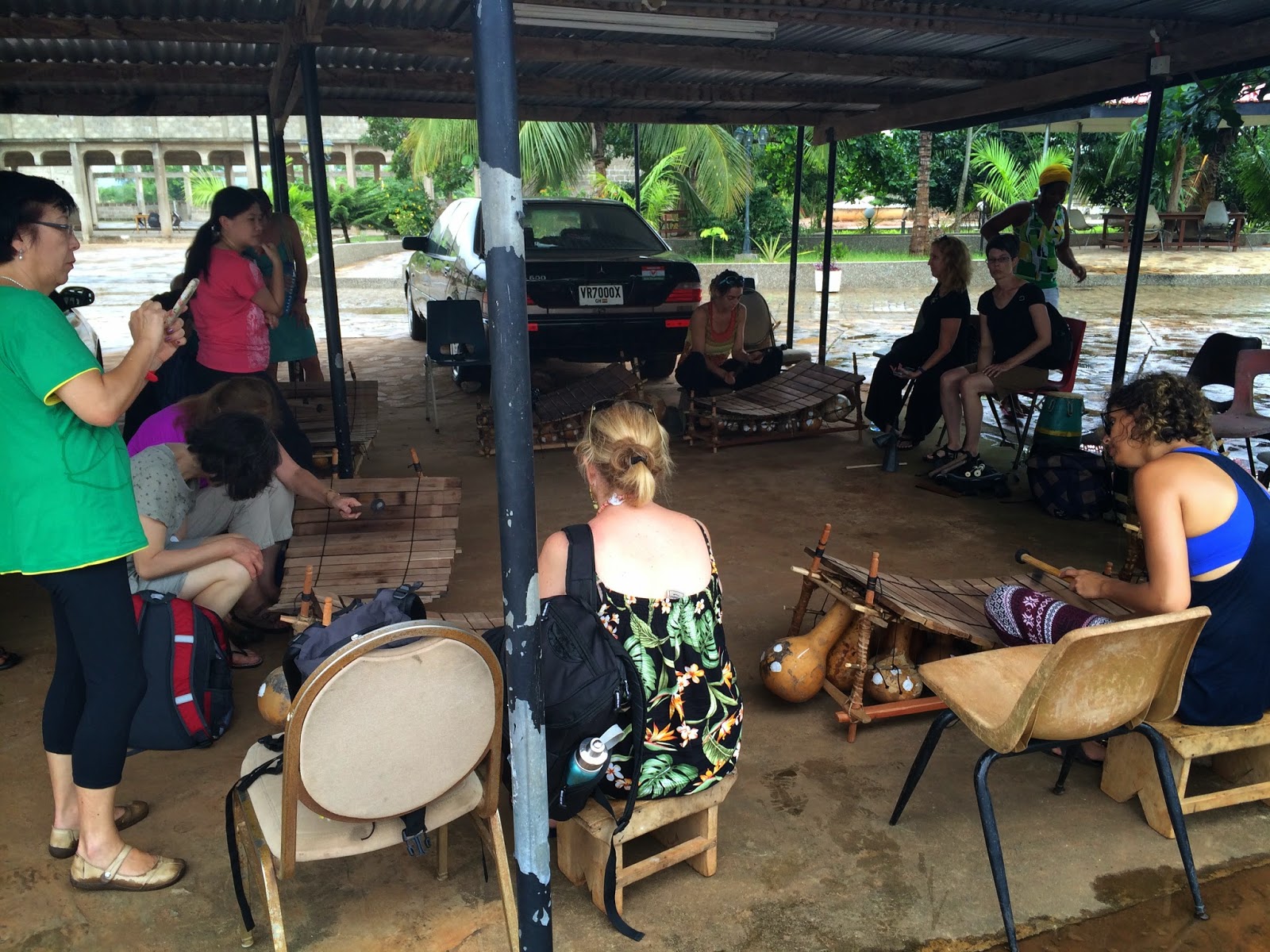Finding One
The greatest challenge to the classically trained western musician—or to any musician, including jazz, rock, country, Latin, whatever field, who has studied in the west—in adjusting to traditional African music (and here I include the entire continent) is the oral nature of its preservation. Until the arrival of European ethnomusicologists, none of this music was written down. Free of the printed page and the necessary strictures of notation (systems for recording meter, rhythm, duration, pitch), African musicians created music of incredibly complex polyrhythms with little or no regard to where the beat would fall. When they dance, they find it with their feet. When they play, it floats freely.
Lacking this frame of reference, it can be difficult for a
western musician to figure out the meter of an African piece. During a drum
circle experience yesterday, Kofi introduced us to a new bell rhythm, then
asked us what meter it was in. 2, 3, 4, 6, 8—we all felt those meters, in one
way or another. “You are all right!” he said, then led us through a lesson in
keeping each of those meters while playing the rhythm. It was challenging—often
it felt like the sort of improv game that leaves players feeling like their
brains have been broken—but in the end, we all had it.
Today during xylophone class, Eske taught us—or, really,
demonstrated for us—a new piece in 12/8. The challenge for all of us was
finding 1. We knew where we wanted it to be, but depending on how you asked
him, Eske might tell us it was in a different place—or right where we felt it.
He doesn’t notate his music, he just feels it, and he teaches it by modeling.
It’s only in creating a version that others can learn on their own, without the
benefit of a teacher, that a musician must be particular about the actual
location of 1.
Kofi has told us there is no word in Ewe for music, that in
fact music is simply the fabric of life. From infancy—before, really, since
pregnant women have their own dance—Ewe children are utterly immersed in music
and motion. Strapped to their mothers backs, with their legs wrapped around
their mothers’ waist, they sleep soundly in the midst of vigorous dancing and
drumming. As soon as they’re moving about on their own, they are dancing to the
same music they once rode to, using every step that’s been modeled to them for
the two years they were on their mothers’ backs. It is not possible for them to
imagine a situation where music is not as present as the air they breathe.
Contrast this with western culture, in which music is
something meant primarily for entertainment, something for which there is a
time and a place, something that can be easily dismissed or cut from a school
budget as frivolous. Any school that has done this has quickly learned how the
lack of a music program sucks the spirit from the curriculum, and every time
I’ve come to a school as a result of music being restored to the budget, I’ve
been greeted with wild enthusiasm by both teachers and students. We understand
how vital music is, but we’ve lost its importance as a piece of our culture.
And we’re not sure how to get it back.
But let’s go back to 1, the first beat, the beat that every
western musician has to find as a fundamental reference point before any music
can occur:, the first thing that makes a piece possible, especially if it
involves more than one musician: ultimately, the best ensembles, the best
musicians, just start. They are in communication with each other at a level
that is deeper than the metronome. They find the beat, play it, sing it, plunge
into whatever they’re performing, and if they’re fully engaged, body, soul,
spirit, what follows is more perfect than the most metrically precise
performance a band director ever beat out of his players. This is music at the
meta level, music under the skin, in the bones, in the lungs and heart and guts
and gonads, music that happens so transcendentally that, when it’s over, it’s
as if the performers are awakening from a trance. I’ve been fortunate enough to
be in that place a number of times in my life, but nowhere near as many as the
performers we’ve heard every night, and will continue to hear until we board
our airplanes back to our western lives. If I can hang onto this, perhaps I can
get myself to let go of 1 when I’m back in the metrical world, the world of
numbers of timetables where music is diminished, but still as essential as
blood, water, food, air.



Comments
Post a Comment